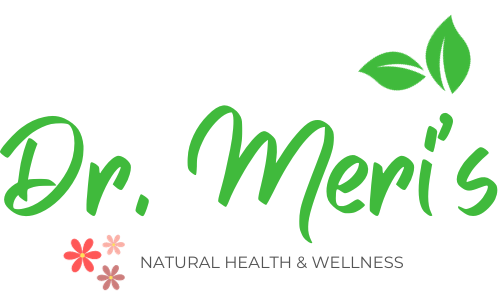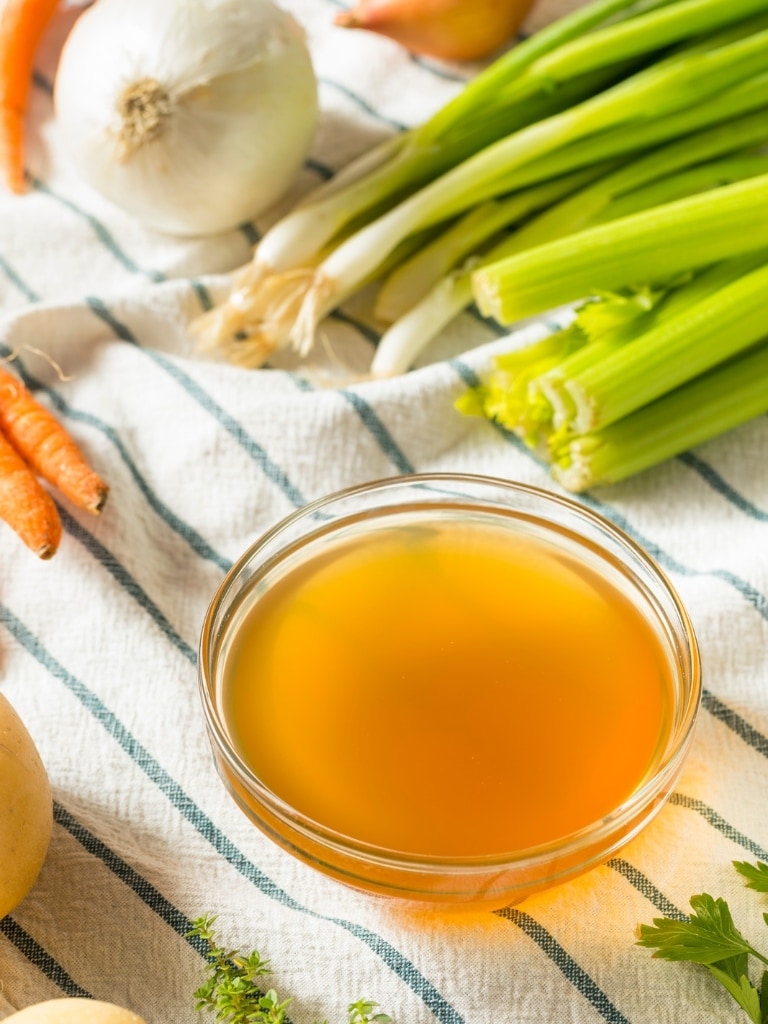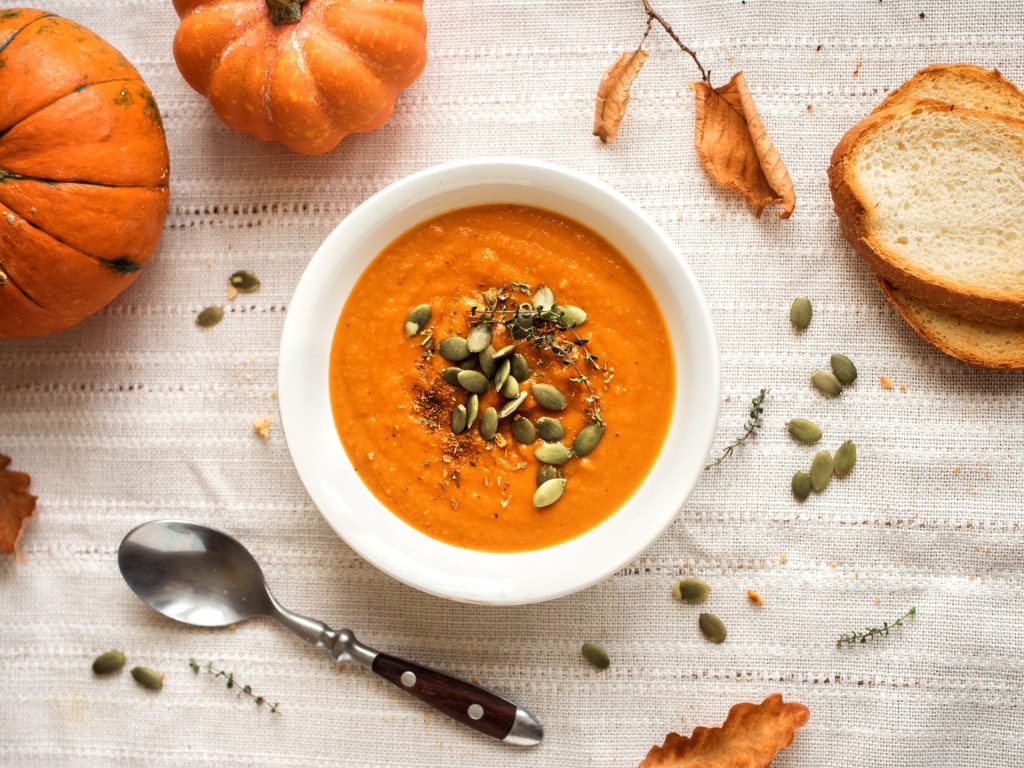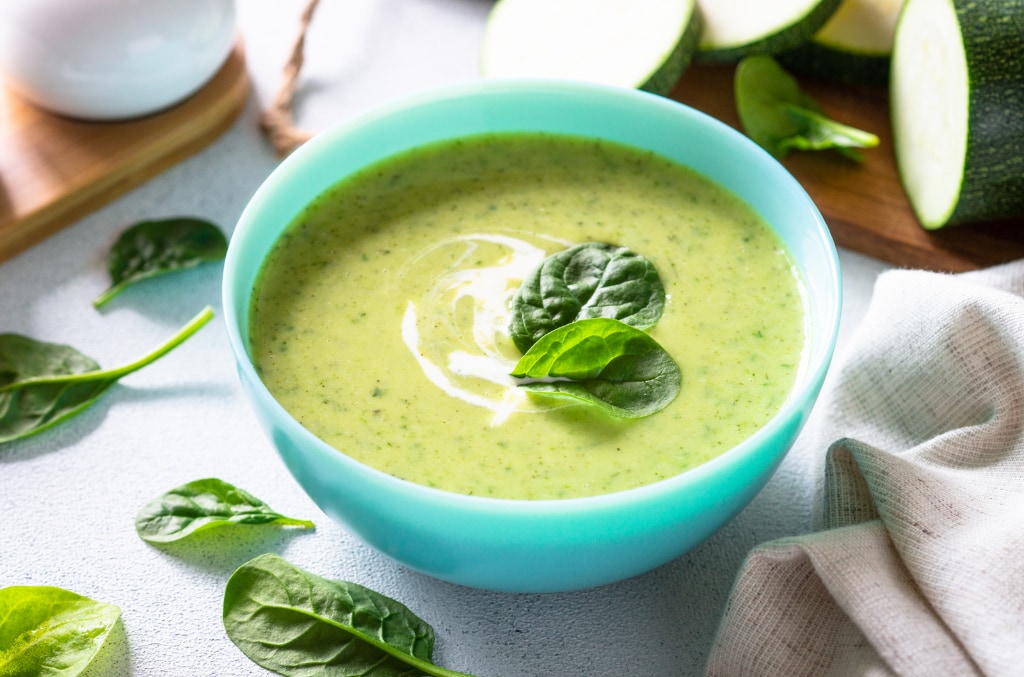Homemade Rich Vegetable Broth
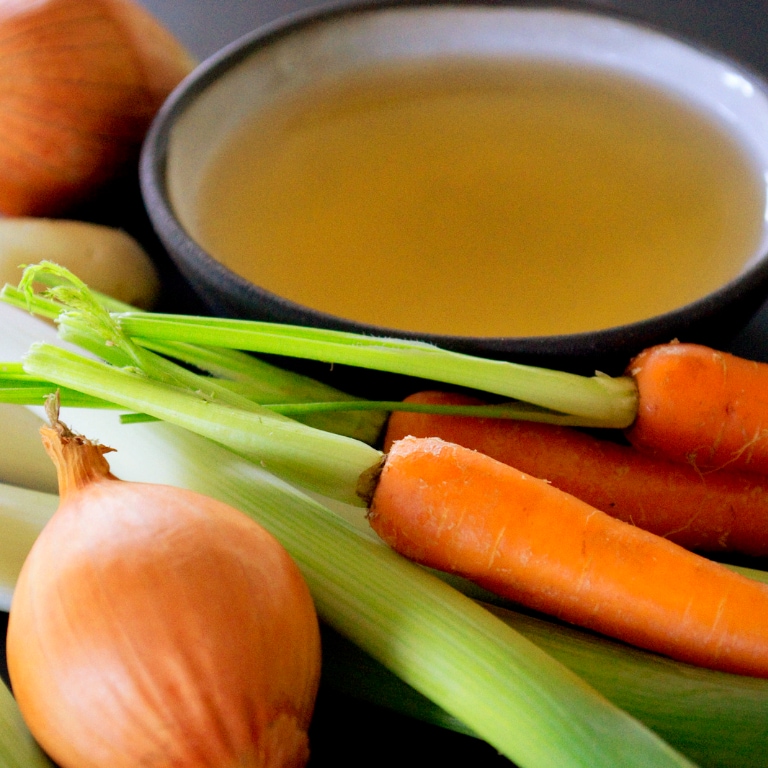
When you buy vegetable broth or stock, you’re going to get a product that’s high in sodium but low in flavor. By making your vegetable broth, you can control the amount of sodium and make an unbelievably delicious base for many dishes that call for broth as the primary cooking liquid.
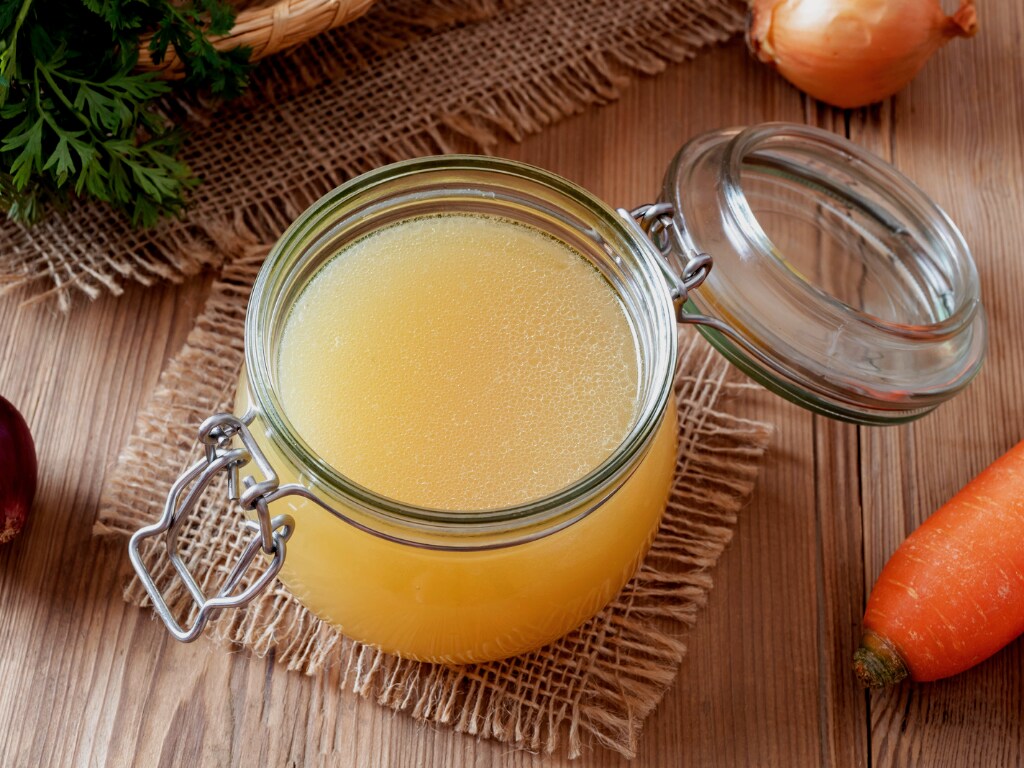
Why should I make my vegetable broth?
A cup of vegetable broth from the store could have 540 mg of sodium in it. Is that how you would like to begin a homemade soup? Examine the labels on some packaged soups and broths the next time you are at the grocery store. Make yourself aware of the potentially excessive amounts of sodium you are consuming.
What is the difference between vegetable stock and broth?
According to many sources, vegetable broth is seasoned, while stock is not. However, in the modern American market (grocery store), the terms are interchangeable, and both frequently contain salt.
For everyday cooking, they can be used interchangeably. If you reduce any of them for sauces, make sure you’re using stock, not broth, and that it’s low in sodium. Otherwise, the water will evaporate and the remaining liquid will be too salty. Making your stock is the best way to ensure this.
What is sodium? Is it the same thing as salt?
Sodium is a mineral that can be found in a variety of foods. For normal muscle and nerve function, your body requires sodium. It also helps maintain body fluid balance. The majority of table salts contains sodium chloride. As a result, salt used in cooking or flavoring foods usually contains sodium. Furthermore, healthcare providers frequently use the terms sodium and salt interchangeably.
Table salt contains 40% sodium and 60% chloride. Sodium chloride accounts for approximately 90% of the sodium we consume. The remainder is derived from other sources of sodium, such as baking soda. These sodium-containing ingredients are used in food to preserve it, improve its color, add flavor, or make it firmer.
Is sodium harmful?
Even though you need some sodium, too much of this mineral could be harmful to your health. Regular consumption of foods high in sodium can make your body retain more water. Additionally, your organs have to work harder as a result of the extra body water. This raises your chance of hypertension, which can impair the health of your heart and kidneys.
What foods contain sodium?
Natural sources of sodium include celery, beets, and milk. Sodium levels in packaged and prepared foods, particularly soups, can be high. The majority of that sodium comes from processed food. Adding more salt increases sodium intake.
How much sodium should we consume?
An adequate daily sodium intake of 1500 milligrams has been established for adults, but most people consume more than that amount.
What is the way to cut back on our sodium intake?
When we cook a little more, we can alter our sodium intake and the quality of our vegetables.
The Nutrition Facts label is the most reliable source of information about the sodium content of specific foods: Look for foods with less sodium on the label. Select foods that have fewer than 120 mg of sodium per serving. On the label, look for the phrases “low sodium,” “very low sodium,” and “salt-free.”
If a food’s label says unsalted, no salt added, reduced sodium, or lower sodium, you should double-check its sodium content. These products might still contain a lot of sodium.
Homemade vegetable broth ingredients
Carrots are high in beta-carotene (a form of vitamin A) and dietary fiber, which is beneficial to gut health. They are also high in B vitamins, as well as vitamin K and potassium. A healthy immune system is ensured by maintaining your gut health. Fiber is beneficial for the heart since it removes excess LDL cholesterol from the arteries and blood vessels.
Garlic is high in several nutrients, including manganese. It has antiviral, antimicrobial, antibacterial, and antifungal properties. Garlic may treat almost any ailment, from earaches to hypertension to common colds. It may also treat colds and flu or reduce your chances of becoming ill.
Onion is high in nutrients and contains potent compounds. It has a high prebiotic and fiber content. This improves gut health by helping digestion, strengthening the immune system, and lowering inflammation in the body. It may reduce your risk of cardiovascular disease and certain cancers. Moreover, onion has antibacterial properties and promotes digestive health, which may help the immune system function better.
Leeks contain plenty of vitamin K, which is good for blood clotting and bone health. They also contain vitamins A and C, both of which are beneficial to the immune system and the skin. Leeks are also high in folate, a B vitamin that is necessary for cell growth and development.
Turnips are a great source of calcium, folate, magnesium, phosphorus, and potassium, among other vitamins and minerals. Among their multiple health benefits, turnips’ vitamin and antioxidant content may have antibacterial, anti-inflammatory, and anticancer properties.
Zucchini contains a variety of vitamins, minerals, and antioxidants. It contains a lot of fiber and has a low-calorie count. Fiber assists digestion and may reduce the likelihood of suffering from a variety of gastrointestinal issues.
Celery is an immune system booster high in vitamin C and antioxidants. You can use the entire celery, from root to leaves! Most broths include celery as an ingredient.
Parsley is rich in vitamins A, C, and K and provides antioxidant benefits.
Coriander leaves (cilantro) and seeds are high in vitamin K, which helps with the formation of blood clots. Vitamin K also aids in the repair of your bones, which helps prevent problems such as osteoporosis. Furthermore, evidence suggests that vitamin K may reduce your risk of heart disease. Cilantro may remove heavy metals such as mercury, lead, and aluminum from the body.
Note: In North America, cilantro refers to the plant’s leaves and stalks. Coriander is the plant’s dried seeds. Internationally, coriander refers to the plant’s leaves and stalks, while coriander seeds refer to the dried seeds.
Basil contains plenty of antioxidants, phenolics, vitamin K, zinc, calcium, magnesium, potassium, and fiber. Many of its health benefits are derived from antioxidants and essential oils. These compounds are mostly lost during the drying process, so use fresh basil whenever possible to reap the most benefits.
Rosemary herb parts, fresh or dried, are high in minerals such as potassium, calcium, iron, manganese, copper, and magnesium. Potassium is a mineral found in cells and body fluids that aid in the regulation of heart rate and blood pressure.
Bay leaf contains vitamins A, C, and B6, as well as calcium, iron, and manganese. All of these vitamins help maintain a healthy immune system.
Dill is high in antioxidants and a good source of vitamin C, magnesium, and vitamin A. This herb may have several health benefits.
Turmeric is high in vitamins C and B6, and other antioxidants, which may lower your risk of serious health conditions such as heart disease and diabetes. It is one of the most well-known spices for its anti-inflammatory properties. It has shown promise in battling specific viruses because curcumin dramatically reduces the amounts of extracellular infectious viruses.
Ginger is high in antioxidants, which protect your body’s DNA from stress and damage. They may help your body fight chronic diseases such as high blood pressure, heart disease, and lung diseases and promote healthy aging.
Oregano is high in antioxidants and can assist in the fight against bacteria and viruses, as well as potentially slowing the growth of cancer cells and alleviating inflammation.
Nutritional yeast is high in vitamins and minerals. It also contains all nine essential amino acids, resulting in a complete protein similar to that found in animal products.
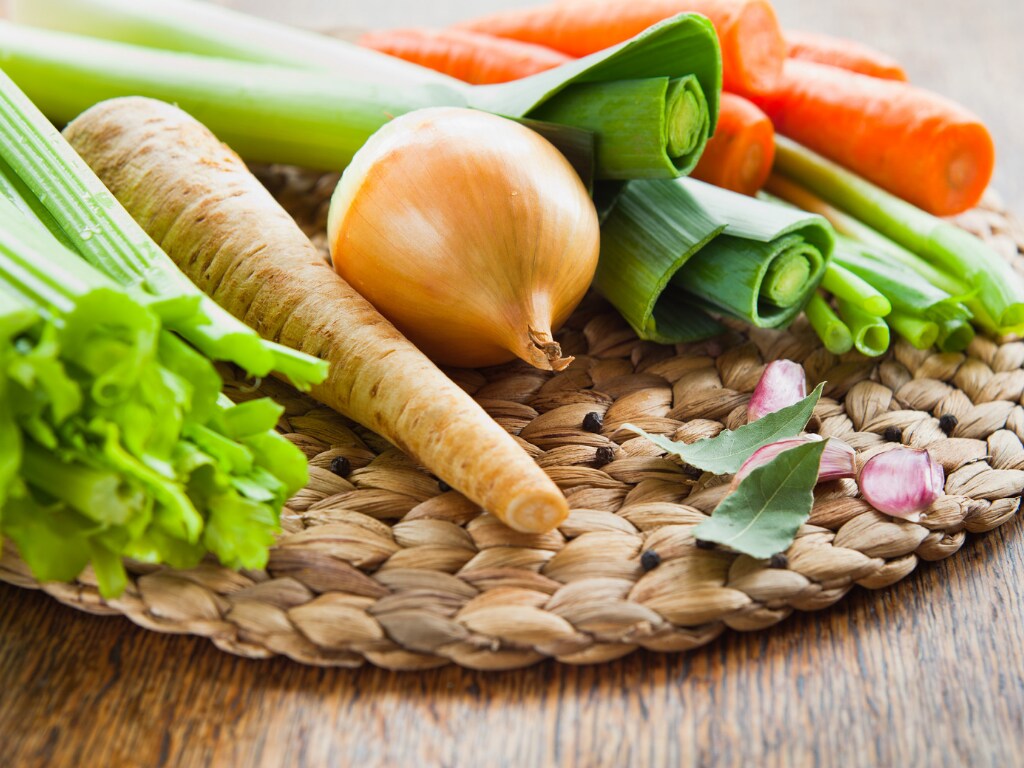
Tips
- If you don’t have fresh or frozen herbs, season with a pinch of dry Italian seasoning.
- Do you have any homemade canned tomatoes on hand? You are welcome to add crushed tomatoes or tomato paste to the mixture.
- Use nutritional yeast to make a more nutritional broth.
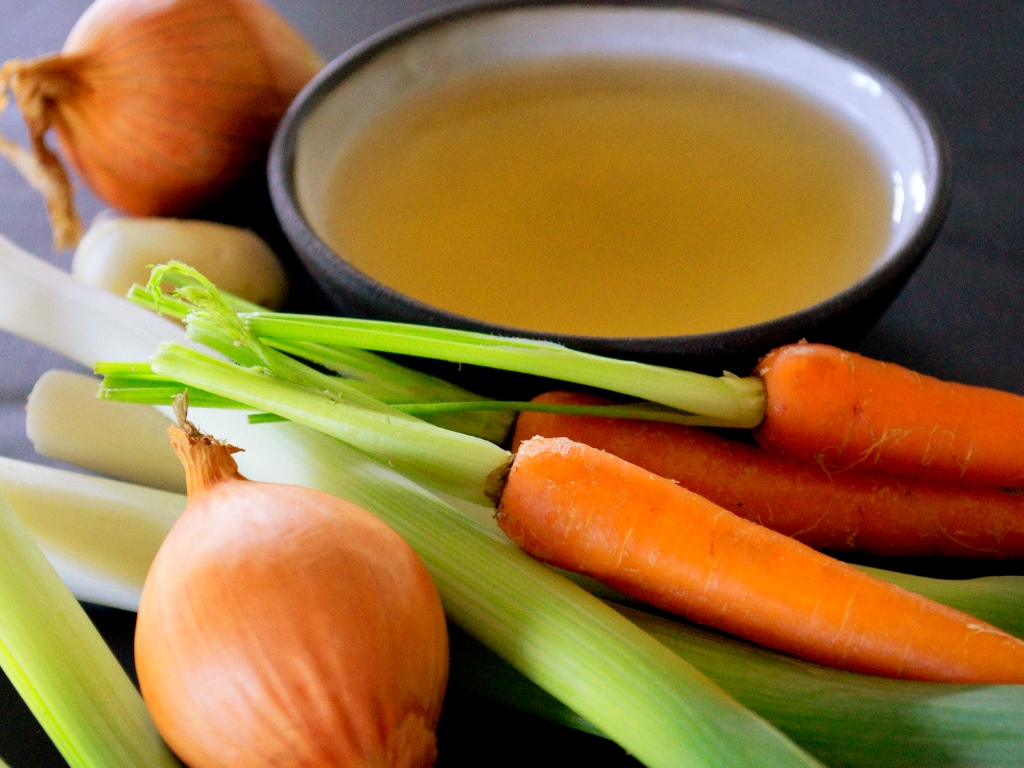
Note: Although sautéing the vegetables helps bring out their flavor, you can skip it if you don’t have time.
If you have veggie leftovers consider adding them to your broth make a broth using mostly veggie scraps.
Check also this recipe of vegetable broth using veggie scrapes.
Note: Examine the nutrition label for an overview of this recipe’s nutritional profile. A nutrient is low if the label lists less than 5% of its daily value, while 20% or more is high. In general, you should limit your intake of saturated fat, cholesterol, and sodium while increasing your intake of fiber, vitamins, and minerals.
Homemade Rich Vegetable Broth
Description
This Vegetable Stock recipe is full of flavor and nutrients! Find out how to make the best vegetable broth, which is nutritious, delicious, and full of depth and flavor. This is the ideal base for soups, sauces, risotto, and many other dishes.
Ingredients
Vegetables with skin and tops
Herbs (leaves and stems)
Seasoning
Other ingredients
Optional
Instructions
-
Warm two tablespoons of oil in a large saucepan. Add all of the vegetables and season with salt and pepper. Cook on medium heat for about 8 minutes, stirring occasionally, to evenly cook the ingredients.
-
Add the water, spices, herbs, and nutritional yeast. Cook for at least 1 hour. If the liquid is reducing too quickly, add more water.
-
Remove the pot from the heat and use a slotted spoon or a skimmer to remove all of the vegetables.
-
Pour the broth through a strainer into a large bowl.
-
Allow to cool completely at room temperature before dividing into storage containers or gallon freezer bags.
Serving Size 4 cups
- Amount Per Serving
- Calories 244kcal
- Calories from Fat 60kcal
- % Daily Value *
- Total Fat 6.8g11%
- Saturated Fat 1.1g6%
- Sodium 591mg25%
- Potassium 1471mg43%
- Total Carbohydrate 45g15%
- Dietary Fiber 11g44%
- Sugars 15g
- Protein 6g12%
- Vitamin A 12464 IU
- Vitamin C 123 mg
- Calcium 419 mg
- Iron 9.91 mg
- Vitamin K 460.5 mcg
- Folate 203 mcg
- Phosphorus 227 mg
- Zinc 2.03 mcg
- Copper 0.67 mg
- Manganese 2.11 mg
* Percent Daily Values are based on a 2,000 calorie diet. Your daily value may be higher or lower depending on your calorie needs.
Frequently Asked Questions
when your vegetable broth cools down enough, store it in the fridge and use it within one week or in the freezer for up to 6 months.
Fill freezer-safe containers with broth when it cools down. Fill containers to their fill line, usually about an inch below the top. This provides space for the liquid to expand as it freezes. When properly stored, it will keep its best quality for about 4 to 6 months, but it will be safe for up to a year after that.
